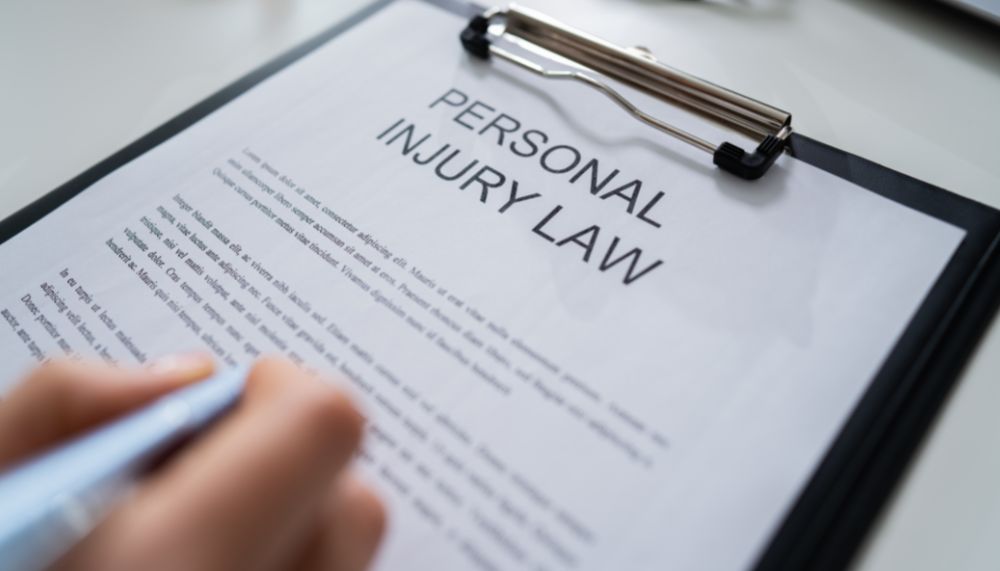No one expects to be injured in an accident, however, even some of life’s most minor inconveniences can result in personal injury under the right circumstances. The initial feeling of being wronged or cheated can be overwhelming, especially when it seems the only recourse is a long and complicated legal process. However, all of the physical, emotional, and financial challenges that follow an accident can be mitigated by understanding the basics of a personal injury claim in La Quinta, California.
Step 1: Determine If You Have a Claim
The first step to advancing a personal injury claim is to determine whether you actually have a case. Many types of accidents and injuries can fall under the personal injury umbrella, but not all of them warrant a legal claim. To move forward with a viable claim, your injury must have been caused by someone else’s negligence or recklessness.
Negligence is defined as the overt failure to use reasonable care, which is the care that any reasonable person would use in the same situation. There are many ways to be negligent, but some common examples include texting while driving, failing to maintain safe premises, and medical malpractice.
Recklessness is similar to negligence, but it involves a conscious disregard for the safety of others. An example of recklessness would be driving under the influence of drugs or alcohol.
You may have grounds to advance a personal injury claim if someone else’s negligence or recklessness caused your injury.
Step 2: File a Claim With the Insurance Company
If you have a personal injury claim, the next step is to file a claim with the at-fault party’s insurance company. You will need to provide the insurance company with all of the relevant information about your accident and injuries, including medical records, bills, and police reports.
The insurance company will then move forward to investigate your claim and determine how much they are willing to pay. It is important to note that insurance companies are businesses, and their primary goal is to make a profit. As such, they can be found to try and lowball victims in an effort to save money.
Step 3: Negotiate a Settlement
If the insurance company denies your claim or offers a low settlement, you may need to negotiate further to get the compensation you deserve. This is where an experienced personal injury lawyer can be extremely helpful. A lawyer is well accustomed to negotiating with insurance companies and will fight to get you the best possible settlement. Common points of negotiation include the severity of your injuries, the amount of medical bills you have incurred, and the amount in lost wages you have suffered. These are major drivers of the value of your claim, so it is important to make sure they are accurately accounted for.
Step 4: File a Lawsuit
If you cannot reach a settlement with the insurance company, you may need to file a personal injury lawsuit. This is a complex legal process where attorney support is highly recommended. The lawsuit will be filed in civil court, and the burden of proof will be on you to show that the other party was negligent or reckless and that their actions caused your injuries.
A personal injury lawsuit will typically go through the following stages:
- Filing a complaint. This is where you formally notify the court that you are filing a lawsuit. The complaint will contain details such as the names of the parties involved, a summary of the events leading up to the accident, and a list of the damages you are seeking. This initial document is also known as a summons, and it must be served to the defendant.
- Discovery. This is the process where both sides exchange information and evidence. Commonly used discovery methods include depositions, interrogatories, and requests for the production of documents. The intent of discovery is to allow both sides to understand the facts of the case fully and to prepare for trial.
- Pretrial. This is where both sides will try to settle outside of court. Common attempts include mediation and arbitration where a neutral third party will try to help the parties reach an agreement. If these attempts fail, the case will proceed to trial.
- Trial. If a settlement cannot be reached, the case will go to trial. A trial is not always a bad thing if you have a strong case. If you were unsatisfied with the settlement offers from the insurance company, you may be able to get a better result by going to trial. From the start of jury selection to the final verdict, the process can be very rewarding if you have a favorable outcome.
Step 5: Collect Your Settlement
If you win your lawsuit, you will be awarded a settlement. This settlement will cover your medical expenses, lost wages, and pain and suffering. Once you have received your funds, you will have enough funds to reverse the financial damages caused by your accident. The total amount of your settlement is dependent on the severity of your injuries, the total of your medical bills incurred since becoming injured, and the amount of lost wages you have missed out on. If you have a strong case, you may be able to get a higher settlement. The level of experience of your lawyer can also impact the amount of your settlement.
Contact English Lloyd & Armenta Today
Personal injury claims can be complex but understanding the basics can help you get the compensation you deserve. If you have been injured in an accident, contact an experienced personal injury lawyer to help you with your claim. The lawyers at English Lloyd & Armenta have helped many people get the settlements they deserve, by effectively evaluating and negotiating their claims. We will do the same for you with the same level of dedication, compassion, and commitment. Contact us today to begin evaluating your claim and making strategic decisions to get you the best possible outcome.


